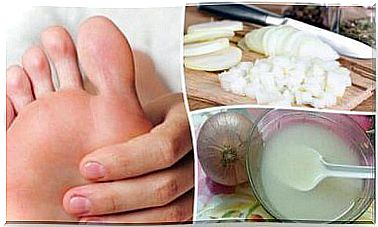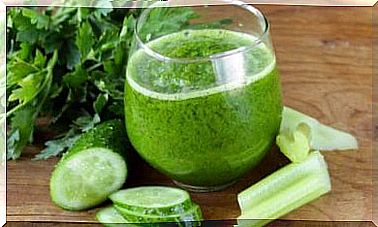The Harvard Plate: Find Out How It Can Improve Your Diet
The Harvard Plate is a guide to creating healthy and balanced meals. In general, it motivates consumers to make good food choices, by eating them in adequate doses.

The Harvard plate (or health plate) has today become an essential tool in nutrition education in our society, on a global scale. This is a methodology created by a group of nutrition experts at Harvard University, which tries to promote a healthy eating style in a simple and visual way.
Thanks to this method of feeding, it will be possible to achieve a reduction in body weight. This will therefore have positive implications for medium and long term health. Harvard’s plate is based on a series of simple and easy-to-apply rules that we will present to you right now.
The Harvard plate as a response to a current social need
According to the World Health Organization (WHO), we are facing extremely worrying rates of overweight and obesity. Although Harvard’s methodology initially focused on this type of population, its multiple benefits mean that any healthy adult can follow it as well.
In other words, it is not necessary to be overweight or obese to include it in our lifestyle, as a healthy option. The aim of the Harvard Plate is to provide a simple methodology for preparing plates in a balanced way.
Harvard’s plate and the nutritional pyramid
In recent years, the popularity of this methodology has placed the Harvard Plate as one of the nutritional benchmarks in our society. It is very easy to find many examples according to the profile of the healthy plate. We can see different examples of this on social media, in food and health promotion campaigns, among others.
This increasingly positions the Harvard plate as a frame of reference in food education. In addition, it questions and reveals certain weak points that we have seen until then in food education. One of the most questioned points has been the famous nutritional pyramid which, until very recently, was the main benchmark.
Different studies claim that the Harvard Plate methodology has certain advantages over the previous nutritional pyramid. Among these strengths we can highlight its visual character in the distribution of food and portions. This makes it easier to learn how to use this tool and integrate it into everyday life.
Another highlight is that the Harvard plate shows the viewer foods of healthy origin. Unlike the pyramid, it does not display foods high in sugars or empty calories that were intended for one-time consumption.

Harvard’s plate: description and composition
One of the goals of the Harvard Plate is to promote the inclusion of fruits and vegetables on a daily basis as a primary staple of the diet. These two food groups are a healthy source of vitamins, minerals and fiber.
In addition, they provide a good dose of carbohydrates, which allow to have a good energy intake. Their regular consumption is associated with a lower risk of death from all possible causes, as stated in an article published in the International Journal of Epidemiology .
Another of its strengths is the reduction in grain intake. This prevents a large part of our daily diet from being based on this food group.
Food distribution
Following this line of ideas, and relying on the image that appears below, the distribution of food on Harvard’s plate would be as follows:
- 50% of the plate would consist of vegetables, preferably seasonal and varying the type of cooking, in the oven, on the plancha, etc. This part of the plate can be combined or supplemented with fruit.
- The other half of the plate would be cut in half. A first half, i.e. 25%, would consist of the food group rich in complex carbohydrates. These are products that the nutritional pyramid included in the majority of its versions. This group includes bread, pasta, rice, quinoa, spelled and other grains, as well as starch (potato and sweet potato). We particularly recommend the consumption of whole grains, thus avoiding the excess of refined products or white flour.
- The last 25% of the plate would be reserved for the protein food group. In this group, we find meats, fish, eggs, legumes or vegetable proteins. We recommend here the consumption of legumes, fish and poultry and limit the excess of meats, cold meats or cheeses that are too fatty.
- It is recommended to consume dairy products in the amount of 1 or 2 servings per day.
- In addition, we encourage the intake of natural foods. This helps to avoid excessive consumption of free sugar in drinks, already sweetened drinks or fruit juices. Adequate consumption of water is also suggested as the main beverage.
- Olive oil is chosen for the preparation of the plate, preferably raw and with cooked food. We limit the excess of trans fats as well as the consumption of butter or margarine for cooking. This type of lipid is linked to inflammation and health problems, according to a study published in the journal Cardiology . There is an association between the ingestion of trans fats and cardiovascular risk: limiting their dietary intake is therefore essential.
Recommendations beyond the plate
It’s important to remember that living a healthy lifestyle goes way beyond what we have on our plate. Although the Harvard Plate is currently a good nutritional benchmark for a balanced diet, it is important to consider the individual needs of each person.
On the other hand, it should also be emphasized that a good relationship with food goes beyond what we eat. Making healthy food choices to take care of your health, and not to slim your figure or restrict yourself, is one of the essential bases in our relationship with food.
Pay attention to your habits for better health
Let’s not forget that taking care of our eating habits is an endurance race. Nothing is stable or rigid because every day we can have different needs. Remember that when it comes to taking care of our diet, one of the most important things is to be flexible.
Introducing the Harvard Plate as an additional tool is something that can help us improve our eating habits. This does not mean that it is the only option to take care of our health, nor that we are making a bad choice by not following its model.
Be flexible, understand that taking care of yourself is something that can be learned and that, if you wish, will turn into a habit that will stay with you for the rest of your life.









